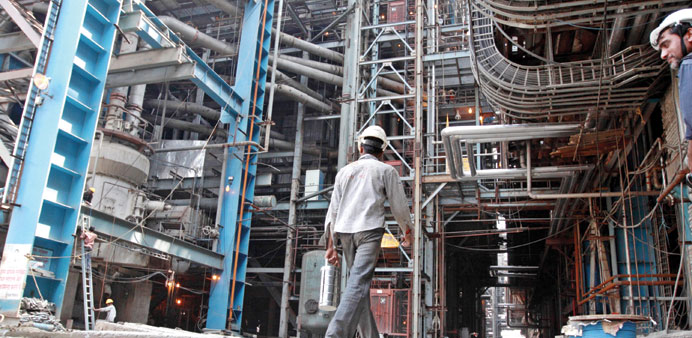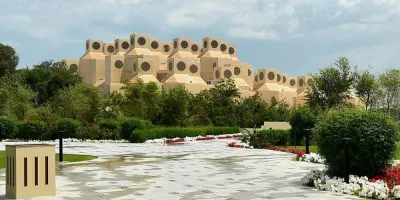A power station of NTPC is seen in Dadri, Uttar Pradesh. A report yesterday said the chronic shortage of power is the main impediment to India’s economic revival.
Reuters/New Delhi
India’s drive to break an infrastructure investment logjam has come too late to revive the economy before the forthcoming general election – and it could be years before it pays growth dividends for the next government.
Although a cabinet task force set up by Prime Minister Manmohan Singh has fast-tracked approvals for projects worth 5% of gross domestic product, severe bottlenecks will limit the scope for his successor to achieve a turnaround.
Figures out today are expected to show that the economy grew by 4.9% in the last three months of 2013 from a year earlier, near a decade low, as stubbornly high inflation and increased borrowing costs depress confidence that has yet to recover from the global financial crisis.
Opposition leader Narendra Modi, widely favoured to become the next leader of the world’s most populous nation, has the backing of big business and a strong growth record running his home state of Gujarat.
The election must be held in May at the latest. But economists see no quick fix after the polls that can overcome the malaise and bring a return to the double-digit rates of investment growth that drove India’s boom of the past decade.
“Despite the recent spate of clearances an early revival seems unlikely, given the long gestation period of projects,” says Aditi Nayar, an economist with ratings agency ICRA.
Officials concede that rapid approvals won’t revive investment overnight, but they argue that India’s $1.8tn economy could still achieve growth rates of 7% if projects are executed on time.
“Delays in projects and critical inputs are hitting economic growth,” C Rangarajan, chairman of Singh’s Economic Advisory Council, said this week.
The government had set a five-year target of investing $1tn in infrastructure by 2017, with half coming from the private sector, in a bid to lift economic growth to 8.4%.
The Asian Development Bank, in a report last October, identified a funding gap of more than $100bn.
The International Monetary Fund attributes India’s slowdown in large part to infrastructure delays. India’s trend growth has declined as a result to 6-7% from 8% before the crisis, it estimates.
A dire shortage of warehouses and leaky distribution channels mean that 57% of food aid fails to reach 800mn intended recipients, according to a report by the Independent Evaluation Office, a new watchdog set up by the government.
And although much freight moves over long distances in India that could be served efficiently by rail and waterways, nearly three-fifths is transported on its potholed roads – compared to 22% in China.
Chronic shortages of power generation capacity persist, too, although the broader economic lull has made it possible to narrow the deficit to an estimated 4.2% of peak demand this fiscal year from 9% last year.
One project that has been a long time coming is the $2.3bn North Karanpura thermal power plant in the eastern state of Jharkhand, where the foundation was laid as long ago as 2001 by Singh’s predecessor.
The location of the plant, to be built by NTPC, was long a bone of contention between the coal and power ministries. The dispute was resolved only a year ago and the plant will not enter service before 2018.
“Maybe this should have been done four years back,” said a board member of the company. “But it’s better late than never.”
Investment projects worth a combined $52bn are at least now starting to move forward, out of the $80bn cleared last year, which should lift demand for raw materials such as steel and cement.
Capital investment contributes nearly 35% to India’s economy, but it is forecast to barely grow in the current fiscal year that ends in March.
A broad-based investment recovery “holds the key to a sustainable uptick in GDP”, says economist Nayar. Yet, inflation running at 9% and strained government and banking sector balance sheets pose significant constraints.
China’s roll-out of ‘shovel-ready’ projects to offset the impact of the 2008 global financial meltdown has kept growth rates above 7% in the world’s second-largest economy.
However, India’s sprawling democracy is less responsive to such a top-down approach, with many projects encountering major opposition on the ground in addition to the country’s notorious amount of bureaucratic red tape.
Despite winning government approval, Monnet Power Company’s $840mn power project in the eastern state of Odisha has been delayed by two years due to protests by villagers against building key water pipelines and power lines.
“For any greenfield project, issues related to land acquisition, finance and law and order are major hurdles,” said BD Mohapatra, the plant’s chief operating officer.



